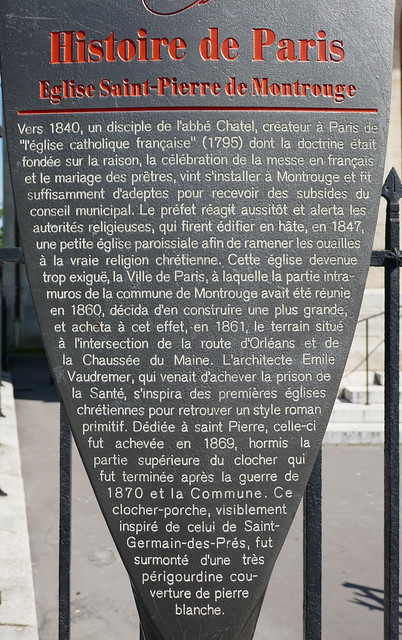Eglise Saint-Pierre de Montrouge. Vers 1840, un disciple de l'abbé Chatel, créateur à Paris de "l'église catholique française" (1795) dont la doctrine était fondée sur la raison, la célébration de la messe en français et le mariage des prêtres, vint s'installer à Montrouge et fit suffisamment d'adeptes pour recevoir des subsides du conseil municipal. Le préfet réagit aussitôt et alerta les autorités religieuses, qui firent édifier en hâte, en 1847, une petite église paroissiale afin de ramener les ouailles à la vraie religion chrétienne. Cette église devenue trop exiguë, la Ville de Paris, à laquelle la partie intramuros de la commune de Montrouge avait été réunie en 1860, décida d'en construire une plus grande, et acheta à cet effet, en 1861, le terrain situé à l'intersection de la route d'Orléans et de la Chaussée du Maine. L'architecte Emile Vaudremer, qui venait d'achever la prison de la Santé, s'inspira des premières églises chrétiennes pour retrouver un style roman primitif. Dédiée à saint Pierre, celle-ci fut achevée en 1869, hormis la partie supérieure du clocher qui fut terminée après la guerre de 1870 et la Commune. Ce clocher-porche, visiblement inspiré de celui de Saint-Germain-des-Prés, fut surmonté d'une très périgourdine couverture de pierre blanche.
82 Avenue du Général Leclerc, Paris
Google Streetview
OpenStreetMap
Subjects
None identified yet. Subjects are curated by hand so please bear with us.

